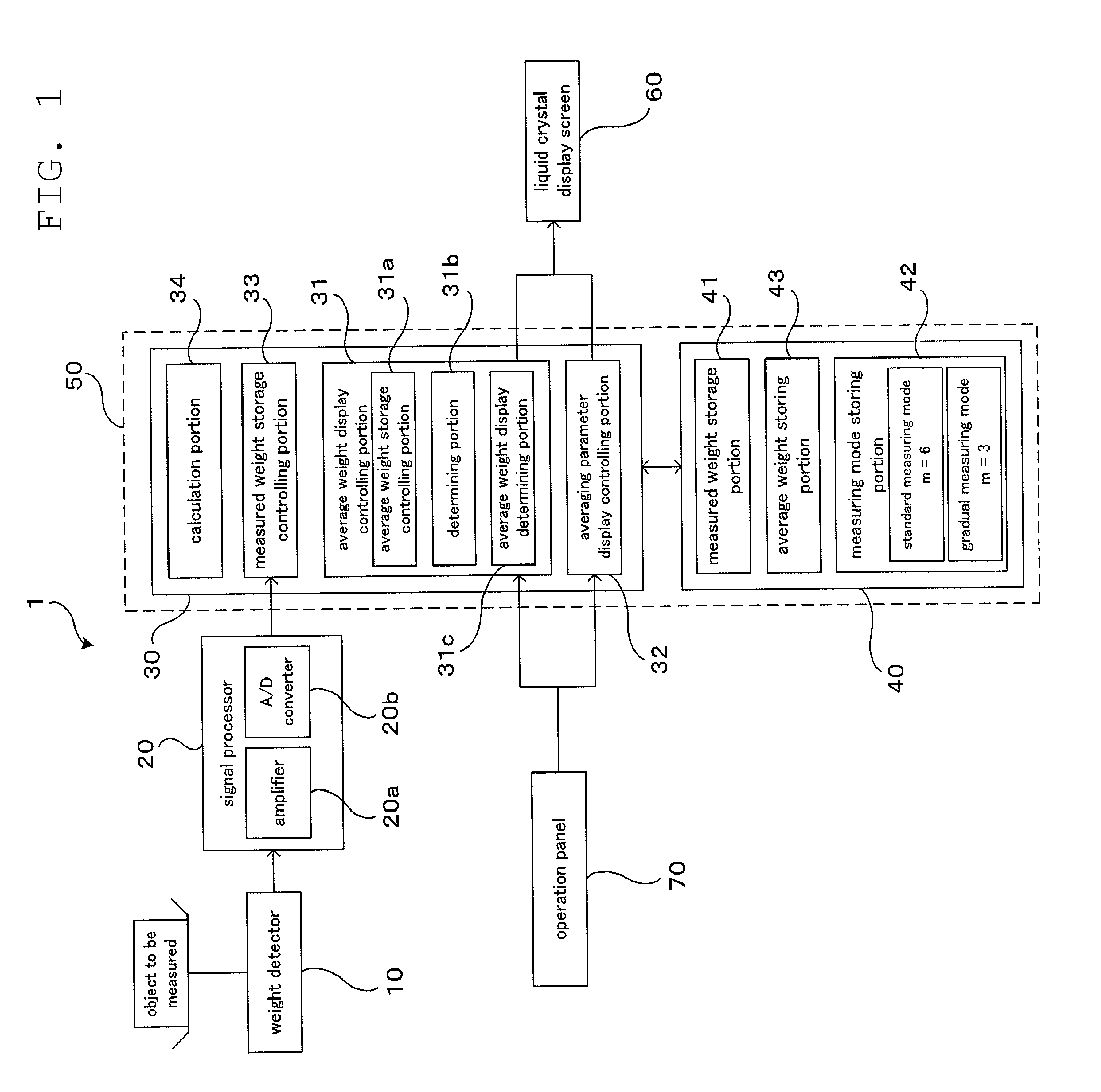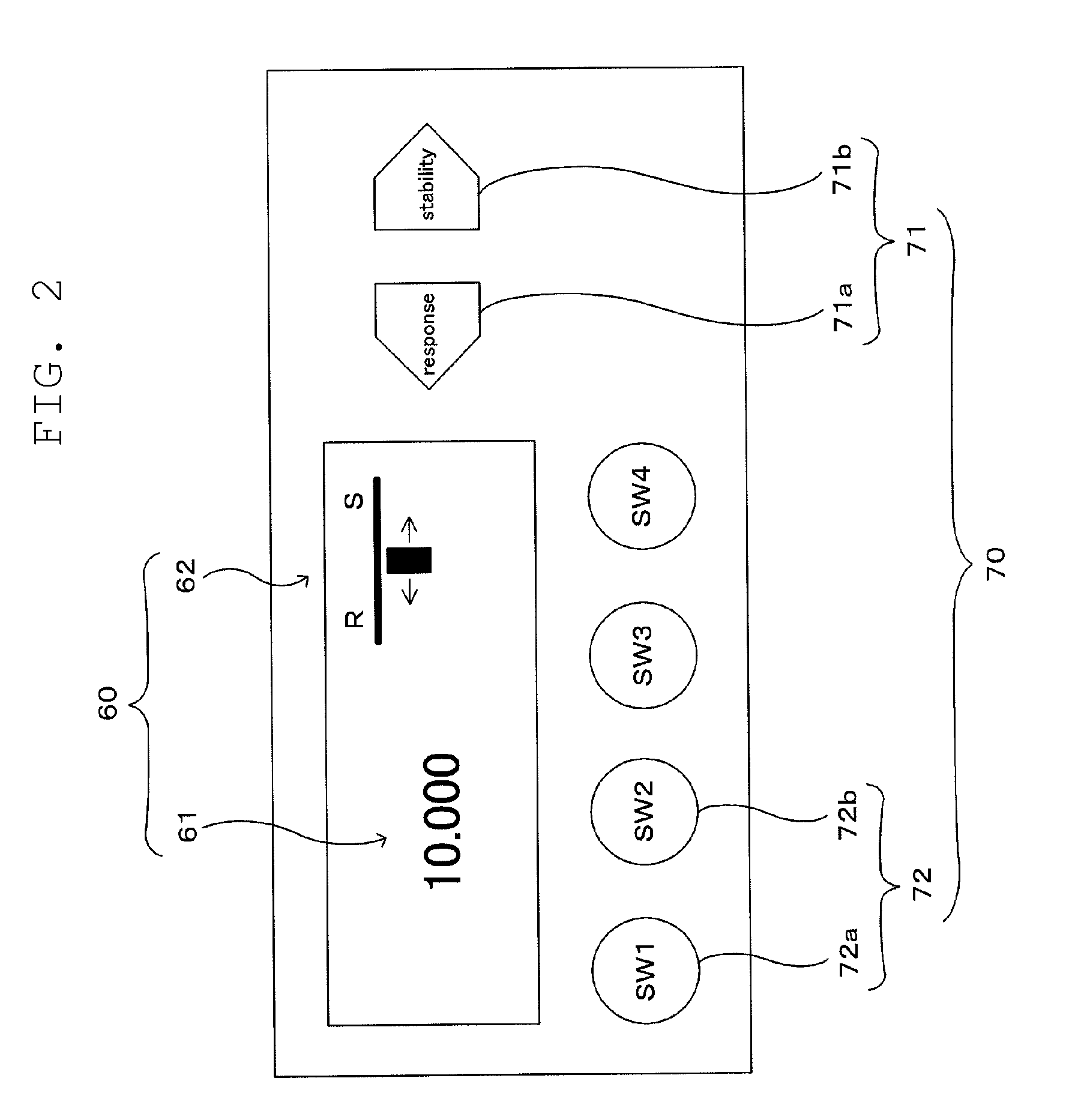Electronic balance
a technology of electronic balance and display, applied in the field of electronic balance, to achieve the effect of increasing the set number, increasing and improving the stability of the displayed average weigh
- Summary
- Abstract
- Description
- Claims
- Application Information
AI Technical Summary
Benefits of technology
Problems solved by technology
Method used
Image
Examples
first embodiment
[0059]FIG. 1 is a block diagram showing the configuration of an electronic balance according to the present invention, and FIG. 2 is a diagram showing an example of an operation panel (input portion) and a liquid crystal display screen (display portion) of the electronic balance shown in FIG. 1. In addition, FIG. 3 is a diagram for illustrating a calculation method for calculating the mth average weight Xmt (mth average weight described in detail below) and FIG. 4 is a diagram for illustrating a calculation method for calculating the amount of fluctuation in the weight Wt. Here, “t” indicates time.
[0060]In the electronic balance 1 according to the present embodiment, the balance between the “stability of the average weight” and the “response of the average weight” can be set by adjusting the set number m (averaging parameter). Concretely, the set number m=1 corresponds to display of the first average weight X1t, the set number m=2 corresponds to display of the second average weight ...
second embodiment
[0099]FIG. 6 is a block diagram showing the configuration of another electronic balance 101 according to the present invention. In the electronic balance 101, instead of adjusting the set number m as the averaging parameter, as in the above described electronic balance 1, the size of the amount of fluctuation in the weight for starting averaging (first threshold value) W for determining whether or not a stable state has been achieved is adjusted, and thus, the balance between the “stability” and the “response” is set. Concretely, when there is an amount of fluctuation in weight Wt within the amount of fluctuation in the weight for starting averaging W, the eighth average weight X8t is displayed in the measurement result weight displaying region 61, while when there is no amount of fluctuation in weight Wt in the amount of fluctuation in weight for starting averaging W, the measured weight X0t is displayed in the measurement result weight displaying region 61. That is to say, when th...
PUM
 Login to View More
Login to View More Abstract
Description
Claims
Application Information
 Login to View More
Login to View More - R&D
- Intellectual Property
- Life Sciences
- Materials
- Tech Scout
- Unparalleled Data Quality
- Higher Quality Content
- 60% Fewer Hallucinations
Browse by: Latest US Patents, China's latest patents, Technical Efficacy Thesaurus, Application Domain, Technology Topic, Popular Technical Reports.
© 2025 PatSnap. All rights reserved.Legal|Privacy policy|Modern Slavery Act Transparency Statement|Sitemap|About US| Contact US: help@patsnap.com



